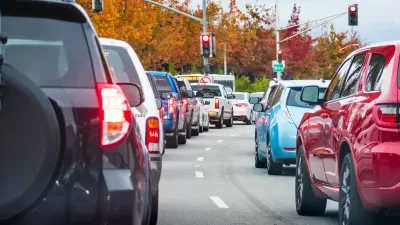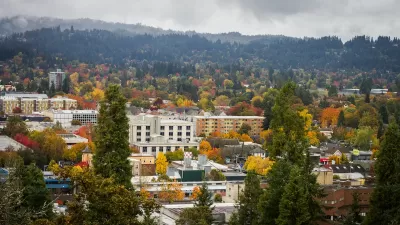With Donald Trump in office, the struggle against climate change may be up to the states. But are even the greenest states doing enough, especially as they continue shuttering nuclear plants?

While state governments, California's in particular, offer up fighting words to the Trump administration on climate, Eduardo Porter says they aren't doing enough. "California is far from providing the leadership needed in the battle against climate change. Distracted by the competing objective of shuttering nuclear plants that still produce over a fifth of its zero-carbon power, the state risks failing the main environmental challenge of our time."
Citing a Brookings study ranking U.S. states by their decarbonization progress, Porter writes, "Despite its aggressive deployment of wind turbines and solar panels, the carbon intensity of California's economy — measured by the CO2 emissions per unit of economic product — declined by only 26.6 percent between 2000 and 2014. That put it in 28th place." Per person, California's carbon emissions were the third lowest in 2014, behind only Washington D.C. and New York.
Efforts to decarbonize have thus far tackled the lowest-hanging fruit: coal. "Most of the gains in the United States have come relatively easily, not from the deployment of renewables but from the wholesale switch from coal to cheaper and cleaner natural gas. Much of that transition has played itself out, however." In light of sluggish decarbonization efforts, Porter questions recent state-level decisions to close nuclear generating stations.
FULL STORY: On Climate Change, Even States in Forefront Are Falling Short

Alabama: Trump Terminates Settlements for Black Communities Harmed By Raw Sewage
Trump deemed the landmark civil rights agreement “illegal DEI and environmental justice policy.”

Study: Maui’s Plan to Convert Vacation Rentals to Long-Term Housing Could Cause Nearly $1 Billion Economic Loss
The plan would reduce visitor accommodation by 25% resulting in 1,900 jobs lost.

Why Should We Subsidize Public Transportation?
Many public transit agencies face financial stress due to rising costs, declining fare revenue, and declining subsidies. Transit advocates must provide a strong business case for increasing public transit funding.

Paris Bike Boom Leads to Steep Drop in Air Pollution
The French city’s air quality has improved dramatically in the past 20 years, coinciding with a growth in cycling.

Why Housing Costs More to Build in California Than in Texas
Hard costs like labor and materials combined with ‘soft’ costs such as permitting make building in the San Francisco Bay Area almost three times as costly as in Texas cities.

San Diego County Sees a Rise in Urban Coyotes
San Diego County experiences a rise in urban coyotes, as sightings become prevalent throughout its urban neighbourhoods and surrounding areas.
Urban Design for Planners 1: Software Tools
This six-course series explores essential urban design concepts using open source software and equips planners with the tools they need to participate fully in the urban design process.
Planning for Universal Design
Learn the tools for implementing Universal Design in planning regulations.
Smith Gee Studio
Alamo Area Metropolitan Planning Organization
City of Santa Clarita
Institute for Housing and Urban Development Studies (IHS)
City of Grandview
Harvard GSD Executive Education
Toledo-Lucas County Plan Commissions
Salt Lake City
NYU Wagner Graduate School of Public Service




























